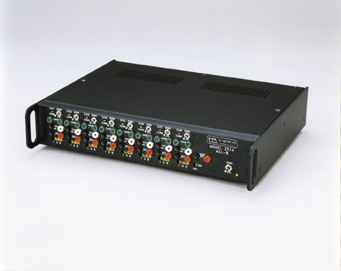A Measurable Difference — Bridge Versus Loop
An electronic measuring circuit delivers accuracy far beyond previous methods, preventing errors caused by variations in the wires that connect sensors to data collection equipment.
This signal measurement and conditioning technology was developed at the Dryden Flight Research Center. The man behind this circuitry innovation, also called "the Anderson loop," is Karl Anderson, a former NASA Dryden measurement systems engineer. Anderson took head-on, the problem of eliminating measurement errors that arise when lead wires pass through severe environments, especially large temperature variations.
The electronic measurement circuit was patented by NASA in 1994. The Anderson loop is in use at many NASA centers where traditional strain gauge and resistance temperature detector devices are installed. It has the potential for use in many medical and industrial applications. Such devices as accelerometers, load cells, and transducers measuring torque, pressure, and temperature, even in harsh conditions, can benefit from the invention.
As for the Anderson loop, the invention proved far better than the classic, vintage 1840s Wheatstone bridge circuit design. That circuit has a long history of successfully being used to measure electrical resistance and small changes in that resistance. But it had its drawbacks. In essence, the Wheatstone bridge is a passive subtraction circuit. Anderson's approach uses a series circuit with continuous active subtraction typically accomplished in the signal-conditioning circuitry at a distance from the sensor.
Dryden demonstrated the Anderson loop, flying special "conditioning cards" as an experiment on the F-16/XL2 aircraft's Surface Laminar Flow Control (SLFC) project. Strain gauges were mounted on the plane and comparative data taken. The difference in using the Anderson loop and Wheatstone bridge methods was, indeed, quite significant. The Anderson loop provided double the signal output.
Trig-Tek, Inc., Anaheim, California, has packed Anderson loop technology into a commercial, eight-channel unit. The company is a leading builder of test equipment and data acquisition instruments. Each individual channel of the portable product using the Anderson loop offers adjustable gain, balance, and current, as well as gauge, reference, and output test points. The equipment offers twice the fundamental sensitivity achieved in a Wheatstone bridge circuit and can tolerate random changes in the resistance of any and all lead wires.
What is behind the Anderson loop? It consists of two or more impedance elements in a series "loop" circuit. Either alternating current or direct current excitation may be used. Subtractors, the unique feature of this technology, compare the voltage drop across each sensor element with other sensor elements and/or a reference element.
A Wheatstone bridge provides a single, often nonlinear electrical function of a set of up to four sensing elements. In contrast, the Anderson loop can provide independent linear outputs from each sensing element, as well as the sums and differences of their changes. This innovation opens entirely new possibilities for "smart" transducer designs.
An attractive feature of this technology is that existing transducer designs can be converted to use Anderson loop signal conditioning for improved performance.
In 1995, the first non-exclusive license to market all or parts of the invention was issued to Valid MeasurementsTM, founded by Anderson. The license issued allows the retired NASA employee to sell either parts, subassemblies or complete units to potential users, including manufacturers who could then sell products containing the Anderson loop on the wholesale or retail markets without obtaining a separate license from NASA. Licenses can also be obtained from NASA by other individuals or businesses to use the Anderson loop.
TMValid Measurements is a trademark of Valid Measurements.

Trig-Tek measurement device incorporates the NASA-invented Anderson loop electrical circuit. This measuring circuit is far more accurate than commonly used test procedures.













